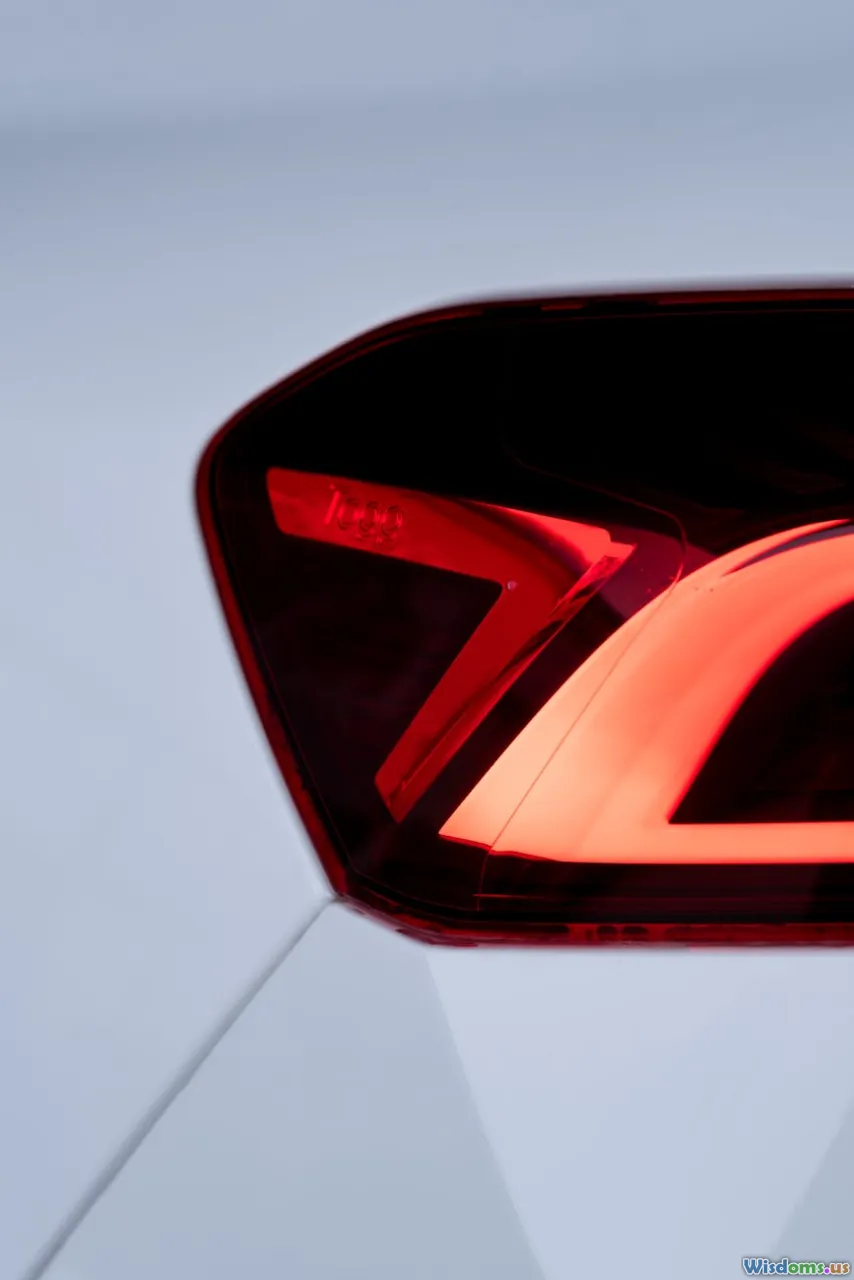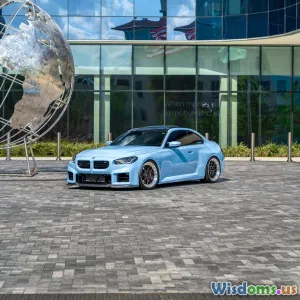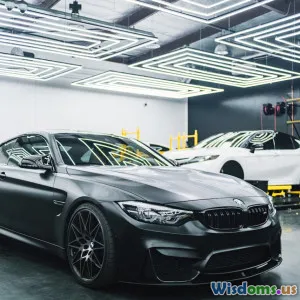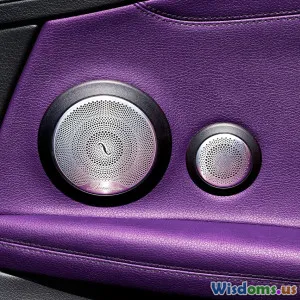
Battle of the Brands: Comparing Taillight Styles Across Decades
9 min read Explore the evolution of taillight designs across decades and brands, revealing how style and technology shaped automotive identity. (0 Reviews)
Battle of the Brands: Comparing Taillight Styles Across Decades
Introduction
Few automotive components encapsulate the spirit of style, innovation, and branding quite like the humble taillight. At first glance, taillights might seem purely functional — little red lamps intended to signal a vehicle’s presence and braking to others on the road. However, taillights have evolved far beyond mere safety. They serve as design signatures, reflections of technological advancement, and symbols that can evoke nostalgia or signal the future. This article embarks on a detailed journey through the evolution of taillight designs over the decades, examining how major automotive brands have expressed identity, innovation, and cultural trends through these glowing elements.
The Origins of Taillight Design: Early Functionalism (1900s-1940s)
Functional Beginnings
In the earliest days of motoring, taillights were accessory items — often small lamps powered by oil or acetylene gas before electric lighting became mainstream around the 1910s-1920s. Safety was the singular focus. Designs were simple: round or oval shapes that served the purpose of making the vehicle visible from behind.
Notable Examples
- Ford Model T (1908-1927) usually had rudimentary tail lamps but paved the way for electric standardization.
- The Cadillac V-16 (1930s) incorporated larger, more stylized rear lamps that began merging functionality with luxury.
While taillights during this era were modest, brands like Cadillac started to hint at the importance of lighting styling as a luxury statement.
1950s–1960s: The Rise of Ornate Styling and Brand Identity
Postwar Boom and Design Boldness
The post-World War II era fueled America's love for bigger, bolder cars. Taillight design exploded with creativity as part of the overall car’s flamboyance. This era’s taillights featured chrome surrounds, bullet-shaped pylons, fins, and elaborate multi-bulb assemblies.
Brand Case Studies
- Cadillac’s “Fins” (1957 Eldorado): Perhaps the most iconic example of taillight artistry, these large pointed rear fins showcased dual bullet taillights. They symbolized American optimism and a fascination with rocket-age technology.
- Chevrolet’s Dual “Jet” Styles: The 1959 Chevy Bel Air featured dual round taillights integrated into sleek fins, giving a sporty and futuristic appeal.
- Chrysler’s Endura Lens Taillights (1960s): Introduced a flexible plastic lens that could self-heal minor damage — a functional innovation still linked directly to taillight style.
This era cemented taillights as a vehicle’s visual signature and a storytelling tool of progress and prosperity.
1970s–1980s: Safety Regulations & Functional Minimalism
Shift Toward Practicality
Heightened safety regulations in the 1970s, coupled with rising fuel consciousness, pushed designers toward simpler, more rectangular taillight configurations. Large fins vanished, replaced by flat, integrated rear panels.
Examples and Innovations
- Volkswagen Golf Mk1 (1974): Offered compact, simple red and amber lenses that combined safety and cost-efficiency — an approach that resonated globally.
- Mercedes-Benz S-Class (W126, 1979) featured horizontally lit taillights using segmented reflectors for brake and signal lights, underlining precision and sophistication.
Cultural Insights
While aesthetics toned down, the 80s also ushered in early LED experiments — such as Italian car maker Ferrari’s limited use — foreshadowing future illumination tech.
1990s–2000s: LED Revolution and Signature Lighting
Technological Breakthroughs
The advent of Light Emitting Diode (LED) technology reshaped taillight design globally. LEDs allowed for slimmer profiles, quicker activation, and intricate designs previously impossible with incandescent bulbs.
Brand Innovations
- Audi’s Dynamic Turn Signals: Pioneered in the early 2000s, sequential LED indicators set new standards. The Audi A8 debut featured the world’s first sequential LEDs on production cars, combining drama with functionality.
- BMW’s L-Shaped LED Taillights: BMW consistently emphasizes distinct shapes. In the E46 3-Series (late 1990s), L-shaped LEDs became an easily recognizable brand DNA element.
Design and Safety Synergy
LEDs enabled multiple lighting segments within a single taillight housing, improving signaling clarity especially during braking or turning, directly impacting road safety.
2010s–Present: Futuristic Minimalism and Brand Statements
The Era of Digital Lighting
Today’s taillights are complex displays of brand identity, often influenced by advancements in digital lighting such as OLEDs, laser, and matrix LEDs.
Key Industry Players
- Tesla Model S Plaid: Features a sleek, continuous LED strip that stretches horizontally, accentuating width and modernity.
- Porsche 911 (992 generation): Boasts an ultra-thin light bar spanning the entire rear width, illustrating advanced LED and digital control.
- Lexus’ “Blade” Taillights: Sharp, angular LEDs resembling sword blades, perfectly matching Lexus’s futuristic and aggressive design ethos.
Interactive Lighting and Customization
Some brands now explore customizable lighting patterns, adaptive brightness, and ambient rear communications, hinting at the future where taillights may become dynamic communicators in autonomous driving contexts.
Cross-Brand Comparisons
American vs European Styling Philosophy
- American Brands like Chevrolet and Cadillac historically champion bold, expressive taillight designs, often dramatic and expansive.
- European Brands such as BMW, Audi, and Mercedes-Benz favor functional elegance combined with subtlety and tech sophistication.
Asian Brands Rising
- Japanese manufacturers like Toyota and Honda balance innovation with affordability. They were early adopters of LED tech in mass-market models.
- Korean brands (Hyundai, Kia) have introduced striking, modern designs with complex geometries, primering the next wave of taillight fashion.
Conclusion
From flickering oil lamps to sophisticated OLED arrays, taillights have journeyed far beyond mere safety devices. They are artistic identity badges, technological showcases, and cultural mirrors. Every decade’s evolution reveals distinct design philosophies, technological breakthroughs, and consumer aspirations. As we move toward autonomous vehicles, connected car ecosystems, and smart city integrations, taillights will continue to evolve—possibly becoming dynamic communicators responding to real-time traffic data and pedestrian interaction.
Understanding the battle of the brands reflected in decades of taillight styles not only deepens our appreciation for automotive design but also underscores the profound role of lighting in shaping how cars express themselves and interact with the world around them. So next time you see a glowing red cluster nestled under a sleek rear bumper, remember—it’s not just illumination, it’s history and innovation intertwined.
References
- McIntyre, D. (2013). Automotive Lighting: Technology and Perception. SAE International.
- Smith, J. (2017). “How LED Technology Changed Auto Lighting Forever,” CarTech Monthly.
- Classic Car Club archives on Cadillac Eldorado fins.
- Interviews with Audi design director on lighting innovations, 2019.
- Safety and Lighting Regulation documents, NHTSA, 1978-1985.
Rate the Post
User Reviews
Popular Posts



















